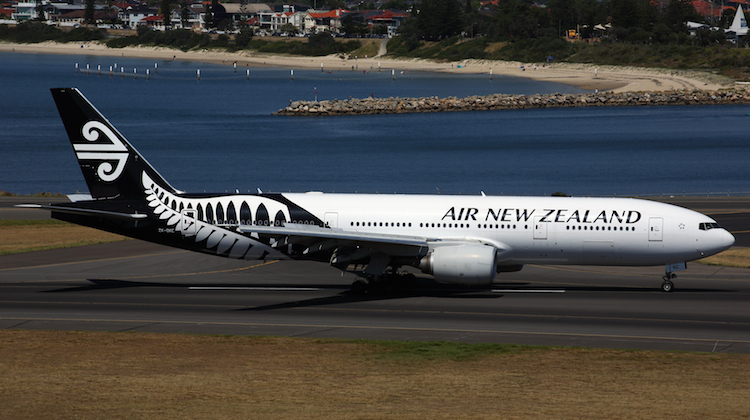
Air New Zealand has flagged tougher times ahead after reporting a record full year profit in 2015/16 as competition both at home and abroad heats up.
The New Zealand carrier said net profit after tax for the 12 months to June 30 2016 came in at NZ$463 million, up 42 per cent from NZ$327 million in the prior corresponding period and the best result in the airline’s 76-year history.
Earnings before taxation and other significant items, which excludes one-off charges and was regarded as the best indication of financial performance, rose 70 per cent to $NZ806 million, Air New Zealand said in a regulatory filing to the New Zealand stock exchange on Friday. It was the fifth straight year of earnings before taxation growth and in line with company guidance issued in February.
That run is forecast to end in 2016/17, with Air New Zealand guiding the market to expect earnings before taxation was forecast to decline by up to 50 per cent to between NZ$400 million to NZ$600 million in the current year, based on current market conditions, a fuel price of US$55 per barrel for the remainder of the year and the “uncertain impact of competition”.
Over the past two years, Air New Zealand has been in expansion mode, with long-haul services to Buenos Aires, Houston and Singapore launched in recent times and flights to Osaka and Ho Chi Minh City taking off in 2016 as the airline sought to take advantage of the strong growth in visitor numbers to New Zealand.
Other carriers are also keen to tap into the the local tourism market – Emirates recently commenced daily Auckland-Dubai flights, adding another option to Europe, the Middle East and Africa, while American and United (in partnership with Air NZ) started new nonstop service from Auckland to their respective US west coast hubs in Los Angeles and San Francisco, respectively.
A bit closer to home, there has been a slew of new fifth-freedom operators on the Tasman, with AirAsia X, China Airlines, Philippine Airlines, Emirates and, from September, Singapore Airlines offering an alternative to the Air NZ/Virgin Australia and Qantas/Emirates/Jetstar offerings.
And in its home domestic market, Air NZ is facing a big push from Qantas-owned Jetstar, which has started serving regional routes with a fleet of five 50-seat Dash 8 Q300s.
Air New Zealand chief executive Christopher Luxon said the company was facing two “headwinds” in the year ahead, namely the end of some fuel hedging benefits and the increased level of competition in the market.
“There’s no doubt customers have more choice but we are confident that we have the right pricing, products and services to stay a step ahead of the competition as we grow our business at home and overseas,” Luxon said in a statement.

Further, Luxon said in the company’s annual shareholder review the airline had a history of “adapting quickly and responding appropriately to changes in the market”.
“Now is no different,” Luxon said.
“One of the important short-term levers we have available is capacity management, and the flexibility to adjust short-haul and long-haul routes if demand levels are not keeping pace with supply.
“We have begun exiting our remaining Boeing 767 fleet and will continue to focus on achieving greater efficiencies from our simplified fleet structure and across our business, which will partially ease some of the pressure on earnings.”
To that end, the airline’s four remaining Boeing 767-300ERs were expected to be withdrawn during the second half of 2016/17, according to a slide presentation accompanying the financial results. Also, the last three 19-seat Beach 1900Ds would be leaving by the end of August.
In other fleet movements, the Star Alliance member said it would receive three more Boeing 787-9s, bringing to nine the total number in the fleet, in 2016/17, while one Airbus A320 and two ATR 72-600 turboprops would also be arriving.
Air New Zealand said it expected its domestic capacity to grow between seven and nine per cent in 2016/17 as it upgauged some regional routes, added more services between the major cities and introduced night flights to Queenstown. It said there would be a “similar competitive environment to 2016” in its home market.

The use of the larger 787-9 to replace some 767 services would result in a three to five per cent lift in capacity on the airline’s trans-Tasman and Pacific Islands network, with the competitive pressure expected to “persist in 2017”.
Meanwhile, Air New Zealand said it expected the “competitive pressure was expected to increase” on the airline’s international long-haul services, as the airline absorbed the full year impact of new US flights from Auckland and new services to the Middle East and China from foreign carriers. The airline has guided the market to capacity growth of between four and six per cent, compared with 16 per cent in the prior year.

The company booked an NZ$86 million loss on its sale of 19.98 per cent of Virgin Australia shares to China’s Nanshan Group. Air New Zealand kept a 2.5 per cent stake in the Australian carrier.
Air New Zealand declared a fully imputed final dividend of 10 NZ cents per share, as well as a fully imputed special dividend of 25 NZ cents per share from the disposal of its Virgin stake.










